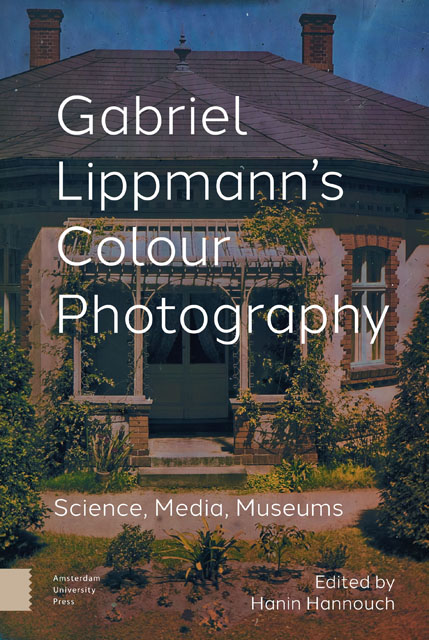Book contents
- Frontmatter
- Table of contents
- Gabriel Lippmann’s Colour Photography: A Critical Introduction
- Part I The Science of Colour Photography and the Colour Photography of Science
- Part II Media History, Aesthetics, and Culture
- Part III Contemporary Reception and Future Trajectories
- Afterword: Building Bridges over Standing Waves
- Index
11 - Modern Lippmann Photography
Published online by Cambridge University Press: 16 November 2022
- Frontmatter
- Table of contents
- Gabriel Lippmann’s Colour Photography: A Critical Introduction
- Part I The Science of Colour Photography and the Colour Photography of Science
- Part II Media History, Aesthetics, and Culture
- Part III Contemporary Reception and Future Trajectories
- Afterword: Building Bridges over Standing Waves
- Index
Summary
Abstract
Since the 1980s, there is a renewed interest in Gabriel Lippmann's colour photography technique and several people around the world recording Lippmann photographs, especially holographers. The development of colour holography shows similarity to interference photography. The same type of panchromatic ultra-fine-grain silver halide material is used both for holography and Lippmann photography. A short review of the history of the technique is provided with a presentation of how modern Lippmann colour photographs can be recorded nowadays. A current advantage is the possibility of recording them without using mercury, making it safer and easier to practice the technique today. Examples of recently recorded interference colour photographs are illustrated with digital photographs.
Keywords: interferential colour photography, colour holography, silver halide, emulsion, contemporary physics
Introduction
Few photographers today are familiar with the name Gabriel Lippmann (1845–1921), even fewer have seen a Lippmann colour photograph, but one hundred years ago, Lippmann was awarded the 1908 Nobel Prize in Physics for his invention of interference photography. This was for his early colour technique exploiting the phenomenon of optical standing waves. Lippmann's prize represents the only time this prestigious award has been given for a photographic invention. However, the process proved difficult and impractical, exposures ran into minutes, the colour were difficult to view and almost impossible to copy. Only a minority of photographers recorded successful Lippmann photographs. Those who did were skilled in making and coating their own emulsions and dedicated many years to the cultivation of the technique. Original examples of this extremely rare, exotic and arcane medium number around five hundred specimens worldwide. Attempts at commercialisation floundered and by the time Lippmann was awarded his prize the more practical autochrome plates had become available. Despite the difficulties, Lippmann's photography remains, to this day, the only direct process of true colour photography known. It is a technique of exquisite beauty, both technically and aesthetically. The ultra-fine-grain plates, essential to the medium, display the highest photographic resolution ever achieved. The encoding of colour, as a periodic volume diffraction grating of colloidal silver offers excellent and unrivalled archival longevity.
Today there is a renewal interest in the technique and several people around the world record Lippmann photographs. It started in the late 1980s with several papers being published.
- Type
- Chapter
- Information
- Gabriel Lippmann's Colour PhotographyScience, Media, Museums, pp. 273 - 288Publisher: Amsterdam University PressPrint publication year: 2022



